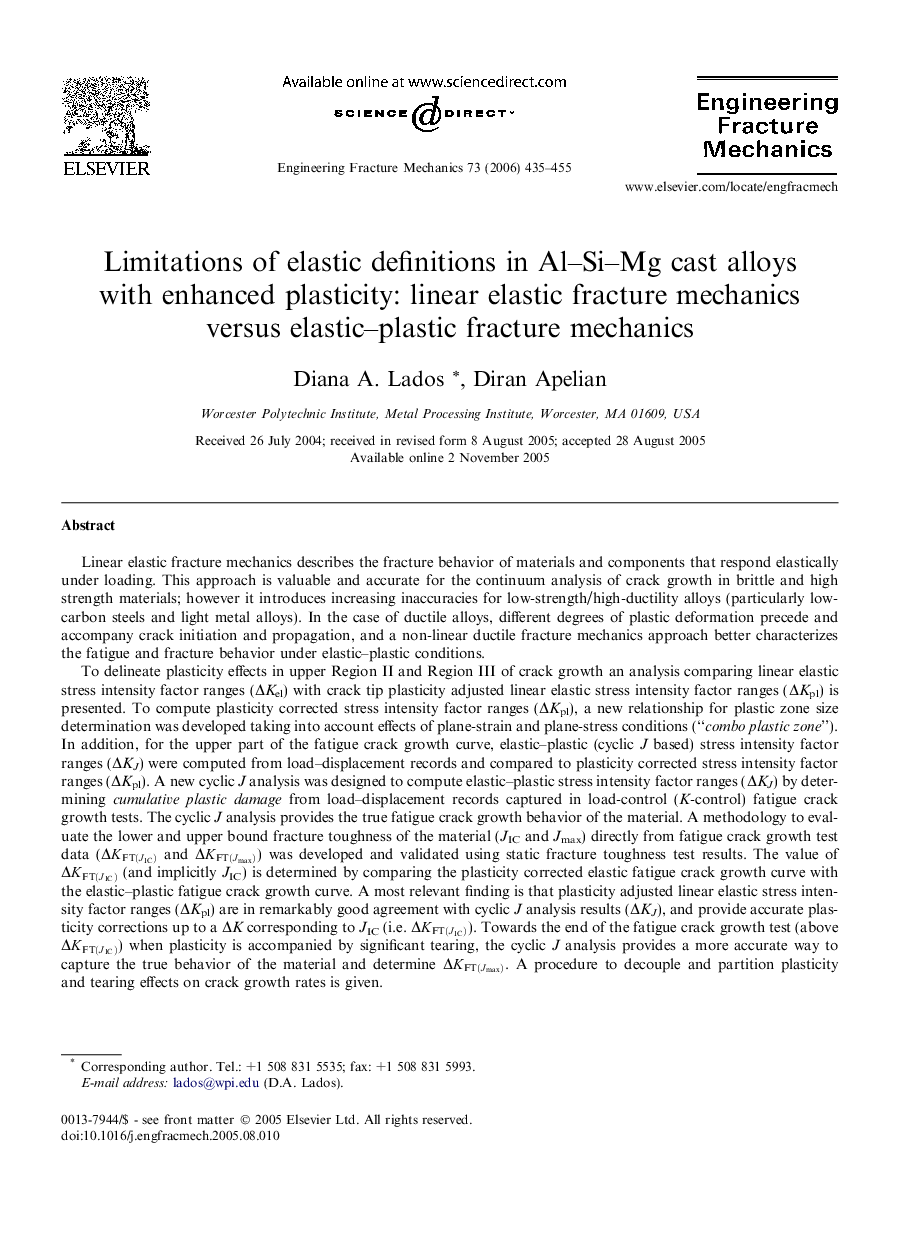| Article ID | Journal | Published Year | Pages | File Type |
|---|---|---|---|---|
| 768414 | Engineering Fracture Mechanics | 2006 | 21 Pages |
Linear elastic fracture mechanics describes the fracture behavior of materials and components that respond elastically under loading. This approach is valuable and accurate for the continuum analysis of crack growth in brittle and high strength materials; however it introduces increasing inaccuracies for low-strength/high-ductility alloys (particularly low-carbon steels and light metal alloys). In the case of ductile alloys, different degrees of plastic deformation precede and accompany crack initiation and propagation, and a non-linear ductile fracture mechanics approach better characterizes the fatigue and fracture behavior under elastic–plastic conditions.To delineate plasticity effects in upper Region II and Region III of crack growth an analysis comparing linear elastic stress intensity factor ranges (ΔKel) with crack tip plasticity adjusted linear elastic stress intensity factor ranges (ΔKpl) is presented. To compute plasticity corrected stress intensity factor ranges (ΔKpl), a new relationship for plastic zone size determination was developed taking into account effects of plane-strain and plane-stress conditions (“combo plastic zone”). In addition, for the upper part of the fatigue crack growth curve, elastic–plastic (cyclic J based) stress intensity factor ranges (ΔKJ) were computed from load–displacement records and compared to plasticity corrected stress intensity factor ranges (ΔKpl). A new cyclic J analysis was designed to compute elastic–plastic stress intensity factor ranges (ΔKJ) by determining cumulative plastic damage from load–displacement records captured in load-control (K-control) fatigue crack growth tests. The cyclic J analysis provides the true fatigue crack growth behavior of the material. A methodology to evaluate the lower and upper bound fracture toughness of the material (JIC and Jmax) directly from fatigue crack growth test data (ΔKFT(JIC)ΔKFT(JIC) and ΔKFT(Jmax)ΔKFT(Jmax)) was developed and validated using static fracture toughness test results. The value of ΔKFT(JIC)ΔKFT(JIC) (and implicitly JIC) is determined by comparing the plasticity corrected elastic fatigue crack growth curve with the elastic–plastic fatigue crack growth curve. A most relevant finding is that plasticity adjusted linear elastic stress intensity factor ranges (ΔKpl) are in remarkably good agreement with cyclic J analysis results (ΔKJ), and provide accurate plasticity corrections up to a ΔK corresponding to JIC (i.e. ΔKFT(JIC)ΔKFT(JIC)). Towards the end of the fatigue crack growth test (above ΔKFT(JIC)ΔKFT(JIC)) when plasticity is accompanied by significant tearing, the cyclic J analysis provides a more accurate way to capture the true behavior of the material and determine ΔKFT(Jmax)ΔKFT(Jmax). A procedure to decouple and partition plasticity and tearing effects on crack growth rates is given.Three cast Al–Si–Mg alloys with different levels of ductility, provided by different Si contents and heat treatments (T61 and T4) are evaluated, and the effects of crack tip plasticity on fatigue crack growth are assessed. Fatigue crack growth tests were conducted at a constant stress ratio, R = 0.1, using compact tension specimens.
